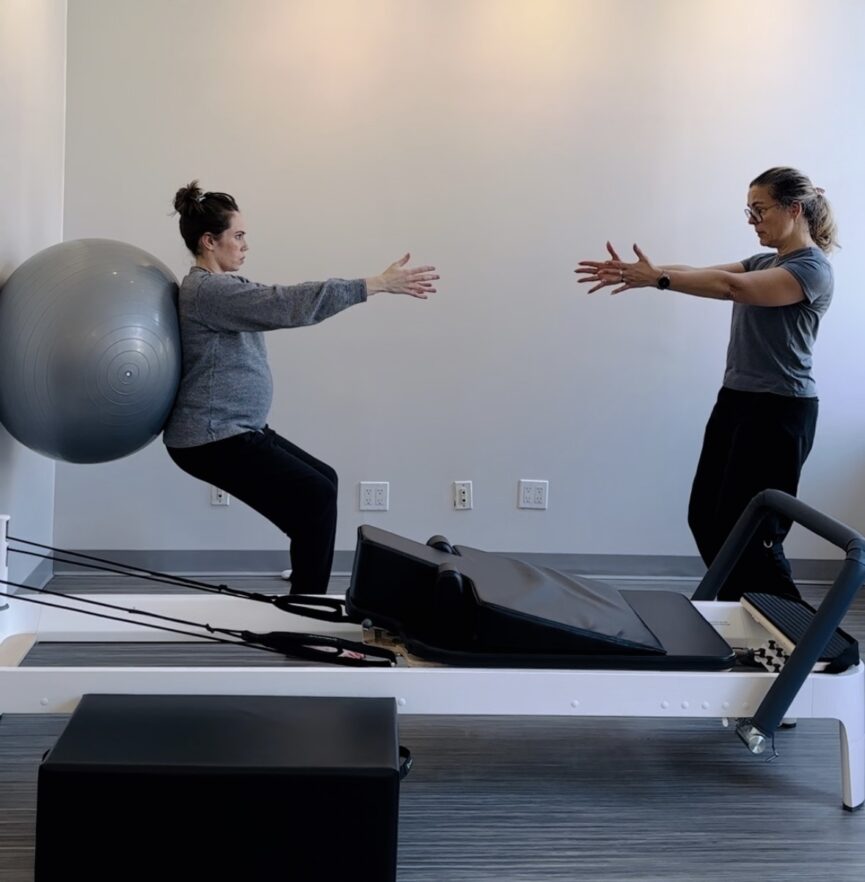The connection between physical therapy and Pilates
Physical therapy and Pilates are often viewed as distinct disciplines—one rooted in clinical rehabilitation, the other in mindful movement. But at their core, both share a fundamental goal: to restore efficient, pain-free function to the body. When strategically integrated, they offer a complementary approach that supports recovery, reduces risk of reinjury, and enhances long-term physical resilience.
Physical therapy typically addresses acute dysfunction and is often prescribed post-injury or surgery, and focuses on restoring specific areas of weakness, instability, or restricted movement. Pilates, developed in the early 20th century, emphasizes alignment, controlled motion, and neuromuscular reeducation—skills that are equally crucial during the post-rehab stage and beyond.
This intersection has gained increased attention in recent years, especially for those seeking to bridge the gap between rehabilitation and performance. Many physical therapists now integrate Pilates equipment or principles into their work, and movement professionals with deep anatomical training often guide clients through rehabilitative Pilates sequences to reinforce gains made during therapy.
The differences between physical therapy and Pilates
While they may appear similar in practice—particularly when Pilates is adapted for therapeutic use—key distinctions remain between the two.
Scope of practice
Physical therapists are licensed medical professionals trained to diagnose and treat musculoskeletal disorders. They are equipped to work with post-surgical patients, acute injuries, and complex pathologies under physician oversight and often provide manual work such as tissue manipulation, adjustments of the bones, or even dry-needling. Pilates instructors are not medical providers, though those with rehabilitative training often collaborate with healthcare professionals to support functional progress once medical clearance is granted.
Assessment and outcomes
Physical therapy assessments focus on pathology, range of motion, strength, and pain thresholds. Pilates assessments, when conducted with rehabilitative intent, often focus on movement quality, compensatory patterns, posture, and whole-body integration. The outcomes of physical therapy are typically tied to insurance parameters (e.g., gait restoration or shoulder mobility within a defined period), while Pilates offers an open-ended framework for long-term progress and wellness.
Session structure
A physical therapy session may use modalities like electrical stimulation, manual therapy, joint mobilization, and some exercises. Pilates relies on spring-based equipment, props, and carefully sequenced movement patterns that demand focus, alignment, and deep muscular engagement.
In practice, these modalities often overlap—especially when working with clients managing chronic conditions or recovering from injuries. But understanding their differences allows individuals to make more informed decisions based on their current needs and long-term goals.
What is physical therapy?
Physical therapy is a clinical profession grounded in the diagnosis and treatment of physical impairments, functional limitations, and disabilities. It is often prescribed following orthopedic surgery, injury, stroke, or in cases of chronic conditions such as arthritis or neurological disorders.
The therapeutic process begins with a formal evaluation. The therapist designs an individualized treatment plan, often including:
- Manual therapy to mobilize joints or soft tissues
- Targeted exercises to strengthen weak muscles
- Gait or balance training
- Neuromuscular reeducation
Physical therapy is regulated and reimbursable under most health insurance plans. Sessions are typically short-term and goal-oriented. Once those goals are met, patients may be discharged—even if deeper compensatory patterns remain unaddressed.
This is where Pilates, or other forms of intelligent movement, can play a vital follow-up role: by restoring symmetry, improving strength and coordination, and reinforcing new motor patterns to support sustainable change. (Check with your coverage as Health Spending Accounts or Flex Spending Accounts frequently can cover a portion of Pilates too!)
What is Pilates?
Pilates is a movement methodology originally created by Joseph Pilates in the early 20th century to rehabilitate soldiers in World War I. It focuses on core strength, alignment, and breath-driven control. While originally developed to support overall health, Pilates has evolved into a widely used system for injury prevention, performance enhancement, and post-rehabilitation support.
At its core, Pilates emphasizes:
- Precision: Each movement is performed with control and mindful intention.
- Centering: The “core” or deep abdominal and spinal muscles provide the base of support for all motion.
- Breath: Breath patterns are used to facilitate movement and maintain rhythm.
- Concentration: Mental focus is essential, enhancing proprioception and neuromuscular connection.
- Flow: Movements are sequenced to build both control and efficiency.
When practiced with therapeutic awareness, Pilates becomes more than just exercise—it’s a framework for re-patterning how the body moves. Its low-impact nature makes it particularly accessible for those recovering from injuries, dealing with chronic conditions, or navigating age-related changes in flexibility and balance.
Physical Therapy and Pilates work together for optimal rehabilitation
In summary: For individuals navigating pain, injury, or limited mobility, physical therapy offers critical medical support to restore basic function. Pilates can build on that foundation, helping the body move with intelligence, fluidity, and strength. The integration of the two—whether in sequence or in tandem—offers a holistic, movement-based path toward recovery and sustainable wellness.
A personalized, holistic approach to rehabilitative Pilates
At Dynamic Body Pilates, we understand that healing and rebuilding strength isn’t always a straight path.That’s why we focus exclusively on one-on-one, rehabilitative Pilates that bridges the gap between physical therapy and lasting functional strength. Our method begins with a comprehensive Dynamic Body Assessment and continues with personalized programming tailored to your unique history, goals, and movement patterns. Book your complimentary phone consultation today and begin your journey toward stronger, pain-free movement.

